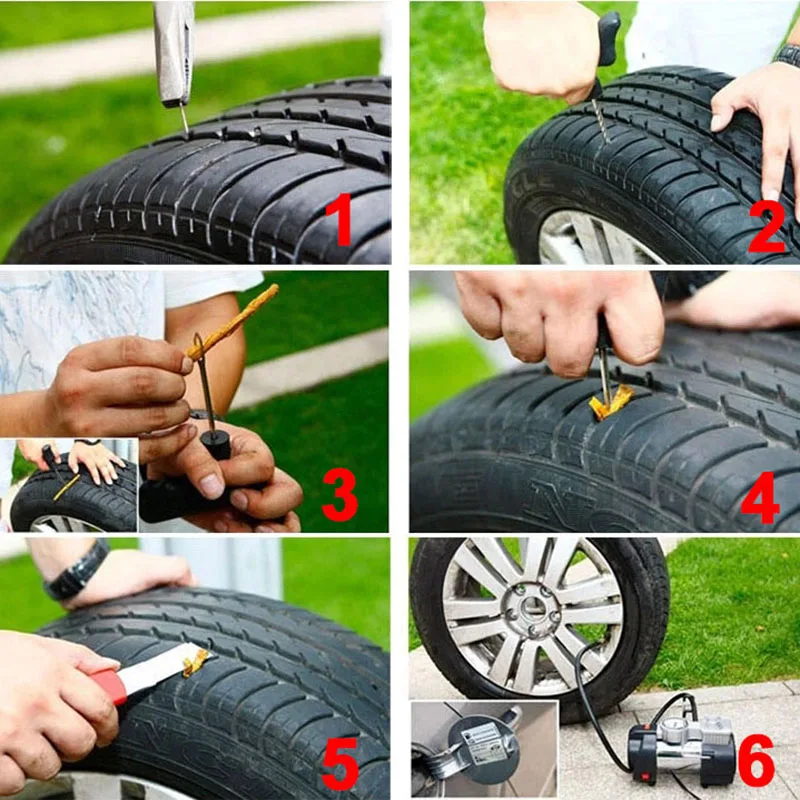We are reader supported and may earn a commission when you buy through links on our site. Learn more
As any avid biker, ATV, or driving enthusiast will tell you, tire punctures become more and more likely the more you use and enjoy your set of wheels. Whether you’re mountain biking and hit a sharp rock or off-roading and pick up a nail on a back lane, a puncture repair kit can mean the difference between making it home and having to walk many miles or wait by the side of the road for assistance.
Finding the precise kind of puncture repair kit that’s best for you and your ride, however, can be a small challenge. There are different kinds of repair materials, various types of tools, and kits that come in different sizes. We’ve been gathering the links to some of the best ones we could find in order to help you out by comparing and contrasting some of their features.
Editor’s Choice
Tooluxe universal tire repair kit
Check Price on Amazon
Durable Pick
Grand Pitstop tubeless tire puncture repair kit
Check Price on Amazon
Glueless Pick
Vibrelli mini bike pump and glueless puncture repair kit
Check Price on Amazon
In most cases, no matter the kind or the vehicle the kit is intended for, a puncture repair kit comes with everything you need to temporarily fix a hole in a tire so that you can make it home safely. It’s an on-the-go solution for holes and flat tires until you can get the problem properly repaired or replaced. Kits tend to come with everything you need to stop the air from escaping your tire so you can get back on the road.
Depending on the kind of tire you’re working with, there are several different types of tire repair kits, and each has its perks. You might find:
If you’re still looking for some product guidance, check out this pros and cons list of the best puncture repair kits for tubeless tires that we came across in our search!
This diverse puncture kit from Tooluxe is an effective investment because it works on all different kinds of tires, so long as they’re tubeless. These hand tools and adhesive rubber strings are durable, well tested and positively reviewed, and quite straightforward to use (even if it takes a bit of elbow grease).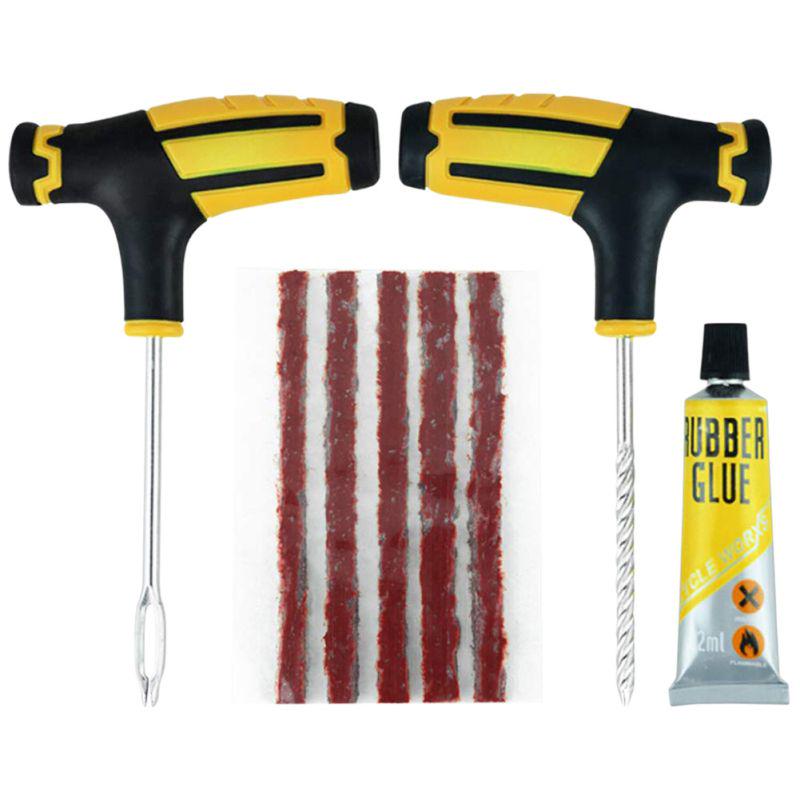 Once the plug is in, it will actually last you quite an extensive period of time in your tire, so long as you inserted it properly.
Once the plug is in, it will actually last you quite an extensive period of time in your tire, so long as you inserted it properly.
Just because you can drive extensively with this kind of plug-in, your tire doesn’t necessarily mean you should. Neglecting to replace a plugged tire is illegal in some places, so you might want to look into that where you’re from.
View price on AmazonHave you struggled with the adhesive rubber strings before and found them a little difficult, so you’d rather try another kind of puncture repair? Maybe you’ll get along better with these plastic plugs from Grand Pitstop instead. This kit is easy to use, does
not require you to remove the tire, and is intended to be universal for all tubeless tire kinds. They provide you with 15 reinforced plastic plugs, three hand tools, and some additional repair pieces, all packed well together in a convenient zipping case.
Although these plugs work in almost any kind of tire, it’s worth noting that they’re only effective on surface punctures in the tire’s actual tread. They will not work on actual cuts in the tire, and they will also not sit properly enough to stop air leakage in sidewall punctures.
View price on AmazonIf the wheels you’re working with are slightly smaller and smoother along with the tread, then perhaps a glueless patch kit like this one from Vibrelli would work a little better for you. This kit comes with rubber adhesive patches that seal smoothly around puncture holes without the sticky mess of glue and also a sponge pad that helps you work out wrinkles and air bubbles. Additionally, you’ll receive a small handheld air pump and gauge for re-filling your tire pressure once the patch is in place. The pump even comes with a rack to mount it smoothly on your bike frame.
Even though these patches are universal to most bike tires, they’re best used on smoother treads.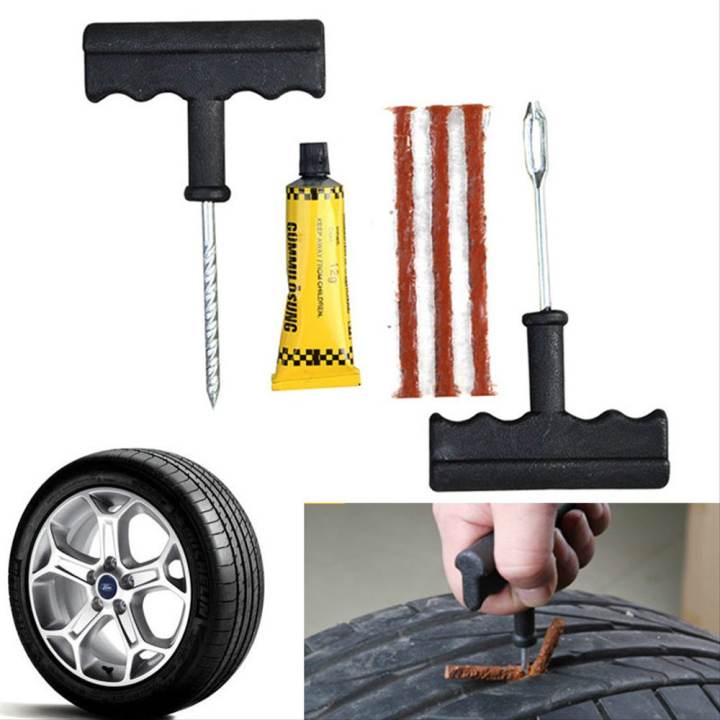 If your tread is very high and textured and a puncture happens between two raised pieces, your patch won’t stick well enough for an air-tight seal.
If your tread is very high and textured and a puncture happens between two raised pieces, your patch won’t stick well enough for an air-tight seal.
If your bike tires do have the kind of textured, more rugged tread that we just talked about above, then you might have more success with this kit from Manual Wheels. It works more like a simple car tire kit, using adhesive rubberized strings and a notched tool to securely plug the hole. This pocket-sized kit comes with just the tool and ten strings for carrying convenience.
Although this kit is nice and space-efficient, its emphasis on just the basics means that it does not come with an air pump for refilling your tire on the go once the puncture is fixed.
View price on AmazonIf you’re going to invest in a bike tire repair kit specifically, would you rather get one that’s a little more comprehensive but still stores conveniently into a strap-on kit? Then we’re pretty sure the 16-in-1 bicycle multi-tool offered in this bundle from Daway will be enough to convince you. Besides this slightly more all-purpose repairs feature, you’ll also get puncture patches, a few plastic plugs, and a hand-powered tire pump for refilling the pressure after patching.
Besides this slightly more all-purpose repairs feature, you’ll also get puncture patches, a few plastic plugs, and a hand-powered tire pump for refilling the pressure after patching.
It’s worth noting that this tire pump doesn’t actually have either a gauge or an atop-stopping feature to notify you when you’ve reached the correct tire pressure and help you avoid overfilling. It’s a matter of judging manually based on how difficult the hand pump is to press down properly.
View price on AmazonDid we really catch your attention when we started talking about the idea of a 16-in-1 multi-tool make for bicycles, but you’re just not sure that you want to carry a kit containing an entire hand pump on the side of your bike? Then maybe this similar but slightly pared-down bundle from Daway will be a little more up your alley. They still provide you with everything you need to fix a puncture with patches, but without the pump and added more occasional use hand tools.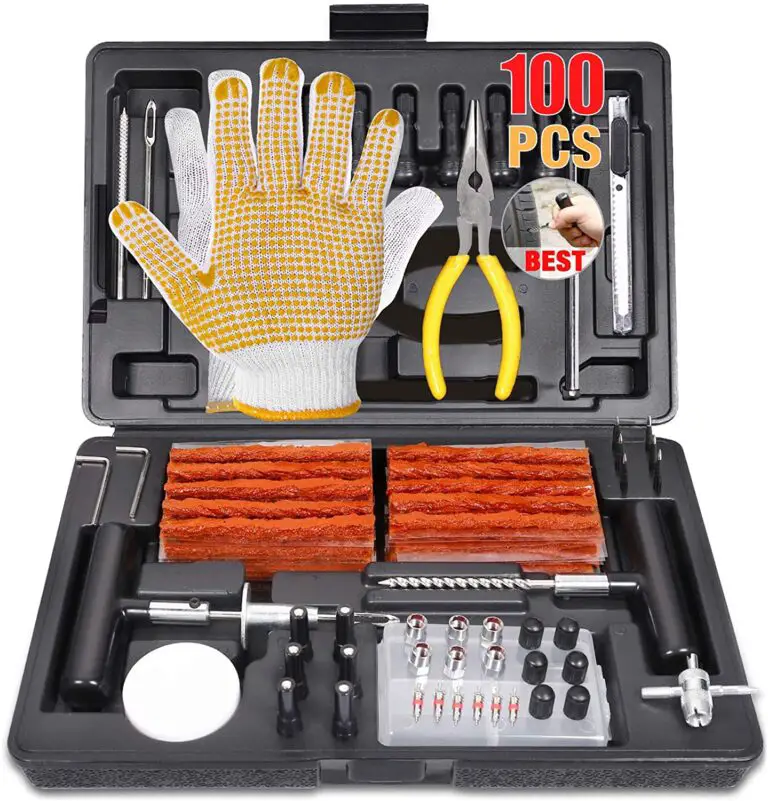
Keep in mind that, like in a few of the kits you saw before, these patches are better for tires with smoother treads because they might not seal properly around a puncture hole that sits between thickly raised pieces. It is, therefore, better for road bikes than mountain bikes.
View price on AmazonAre you actually quite experienced with laying down patches, and you’d rather just have a kit that lets you pull one out, slap it into place quickly and easily, and get back on the road as best you can? Then we’d suggest considering this bundle from Park Tool. Each of the two little boxes you receive is waterproof to keep the adhesive patches protective. Besides the patches, the only additional piece is a sandpaper tube for smoothing the area, so you get a better airtight seal. You get six patches in each box, each with a stretchy, flexible texture that moves with the tire as you ride.
Even though these patches are an awesome fix, you still might want to think carefully before continuing to ride with them long-term rather than replacing the tire. They’re durable, but they are not, themselves, completely immune to puncture.
They’re durable, but they are not, themselves, completely immune to puncture.
Are you actually looking for the most thorough kit you can find, but that still fits in a very small strap-on case because you ride often? Then we think you’ll appreciate the nature of this kit from FreeLive and the many things it includes while still letting you pack light! This kit comes with essentially every useful tool you’ve seen in each comprehensive bundle we’ve shown you so far include a hand pump. This time, however, the pump has its own pressure gauge. All of the pieces fit nice and snugly into a durable zipping case that buckles to the bike right under the seat, where it won’t impede your movement while you ride.
Although this kit is convenient and everything fits well into the kit, some previous buyers found a learning curve to get all the pieces back in properly once they had them out.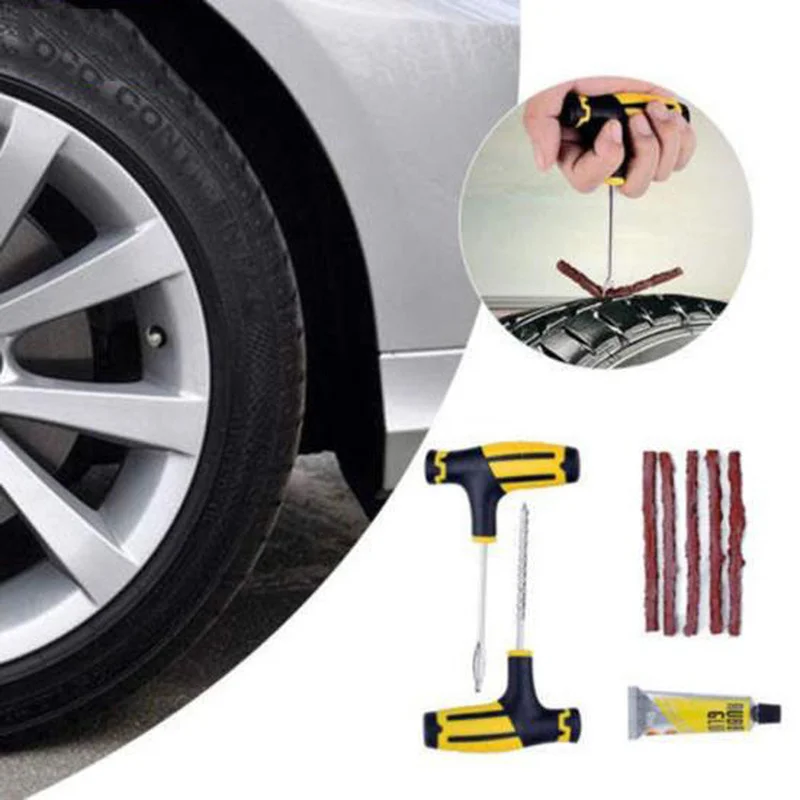 It’s totally doable; you might just find it a little tricky the first few times.
It’s totally doable; you might just find it a little tricky the first few times.
Are you still thinking about the slightly larger and more heavy-duty all-purpose kit we showed you at the very top, but you’ve got several different kinds of wheeled modes of transportation, and you want something that’s about as well equipped as possible? Then you’ll like the way this kit from Boulder Tools helps you handle all kinds of repairs, from tire punctures to moving parts adjustments on the go.
Because it has more to offer, this kit and its hard (but very protective) case is the largest option you’ve seen so far. This makes it a great choice for larger vehicles but not so convenient for pedal bicycles.
View price on AmazonIf you’re still on the hunt for something universal but a lot smaller and more simplified, this zipping kit from BeTooll might be the best option for you.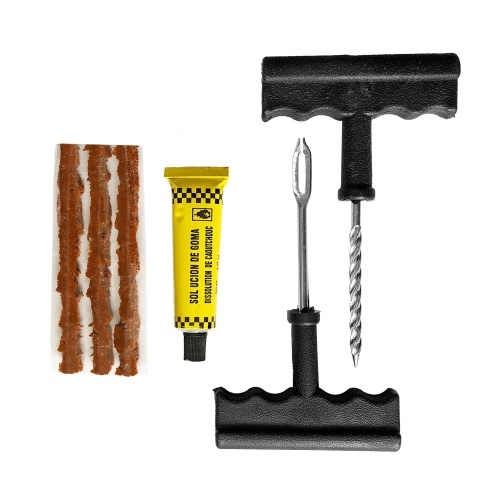 It’s an adhesive string-based repair kit that also features a miniature multi-tool and a strap for attaching it conveniently almost anywhere. The tools for plugging punctures are easy-grip and solid even in their travel-friendly size.
It’s an adhesive string-based repair kit that also features a miniature multi-tool and a strap for attaching it conveniently almost anywhere. The tools for plugging punctures are easy-grip and solid even in their travel-friendly size.
As with some of the other more basic universal kits, keep in mind that this bundle does not come with an air pump for refilling tire pressure once you’ve repaired the puncture.
View price on AmazonDifferent types of puncture repair kits are, of course, used quite differently from each other, and it really depends on which kind you’re purchasing and for what kind of tire. In each case, the instructions will guide you step by step through the process of temporarily patching the hole and putting the tools to good use. Usually, the hole is cleaned out, and then the plug is pressed into place using the hand tool, or the patch is placed over the hole and smoothed for even adhesive coverage.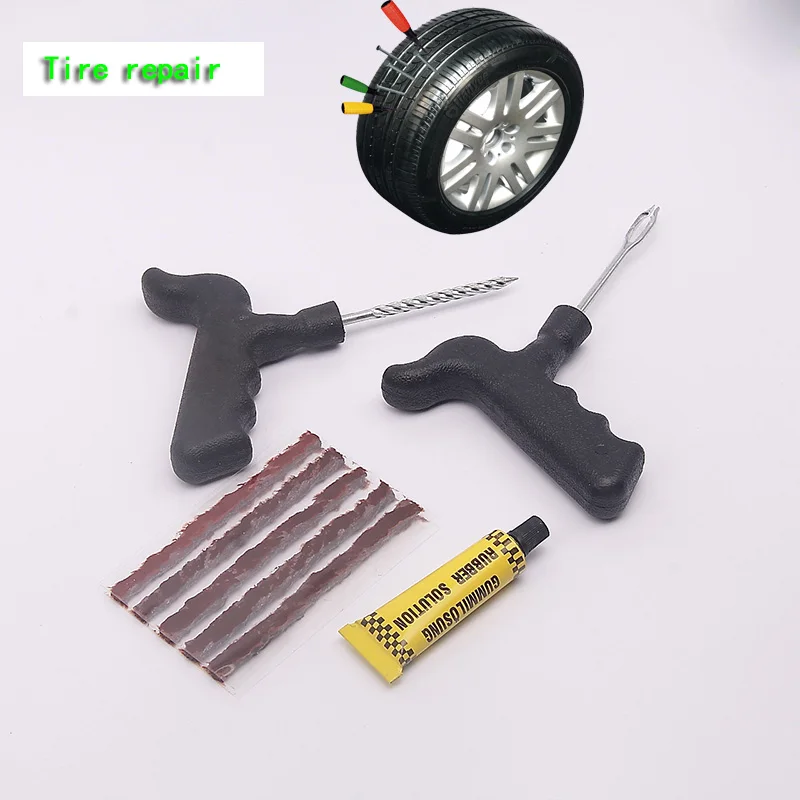
Investing in a puncture repair kit is kind of like investing in insurance; you might not always need it, but you’ll be very grateful to have it on the rare occasion that you suddenly do. Of course, this does mean that you have to physically bring it with you. Otherwise, it’s like having insurance but leaving all of your papers or your card at home and still not being able to access it. We’d suggest carrying your puncture kit whenever you reasonably can. Luckily their sizes are mostly pretty convenient!
The greatest thing about kits is that their whole purpose is to provide you with everything you need to put them to good use. This includes instructions so that you actually know how to make use of the tools inside. We opted to browse the instructions in advance and then stash them inside the kit’s case or in the glove compartment alongside the kit itself. If you need further assistance or you’re a visual learner, there are all kinds of tutorial videos for using different types of puncture repair kits online.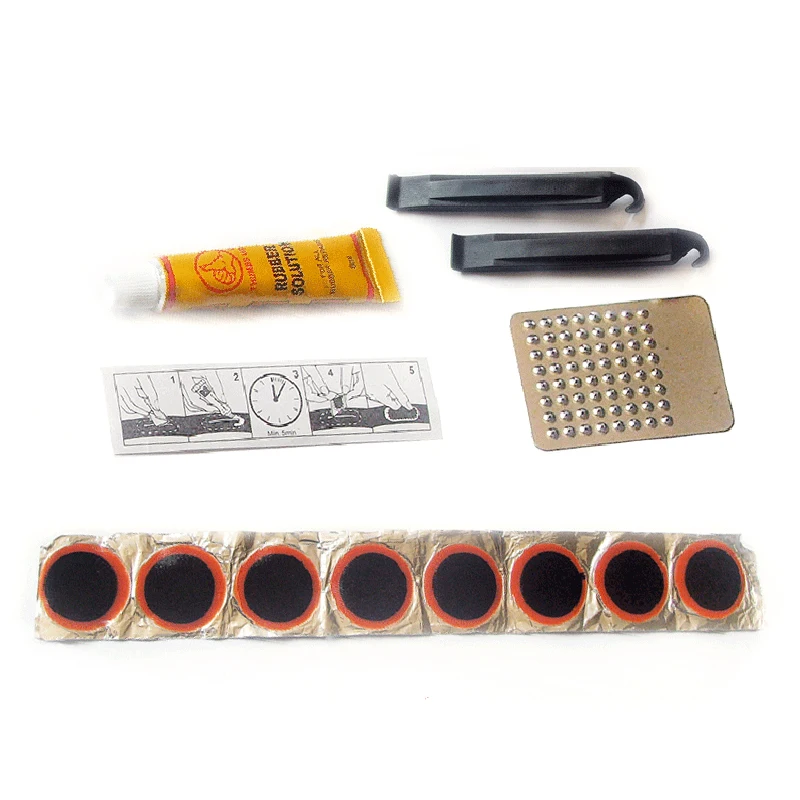
Do you know a fellow wheels enthusiast who wants to invest in a puncture repair but who could use a little more guidance before they make their choice? Share this post with them, so they have all kinds of options to consider.
Despite eight figure verdicts and public safety campaigns by the National Highway Traffic Safety Administration (NHTSA) highlighting the dangers of improper tire repairs, (“plug-only” and “patch-only”) repairs, suppliers continue to market and sell plug-only repairs kits. Likewise, tire repair shops continue to use these improper repair methods.
This web page discuss tire repair techniques, the relative safety of those various repair methods, tire repair litigation and some of the reasons these unsafe methods persist.
Safe and Unsafe Ways to Repair a Tire
Most people discover that their in-service tire may have a puncture after noticing that their tire is flat or low on air.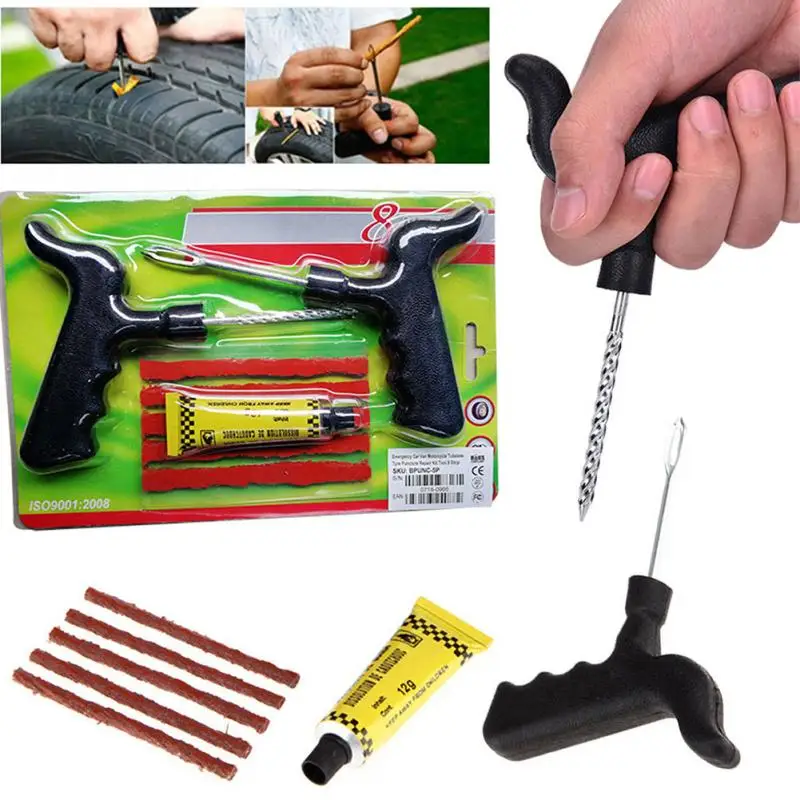
There are three common ways to repair a punctured tire: A plug-only, a patch-only repair or a combination repair. The patch-only and combination repairs require the technician to demount the tire from the rim to examine the inside of the tire for damage and repair it from the inside. The plug-only repair does not. When tire rubber has been punctured, the hole tends to close up when the puncturing item us removed. Therefore, unless there has been damage or the puncturing object is still protruding from the tire, it can be difficult to locate the puncture through a visual examination only.
Technicians will often swab the tire with soapy water or dunk it into a tank to look for bubbles of escaping air. It is impossible to inspect the cavity of the tire for any puncture damage without removing the tire from the rim. This is one of the multitudes of reasons why a plug-only repair is an unsafe method.
A plug-only repair is accomplished by inserting the plug through the outside of the tire with an insertion tool.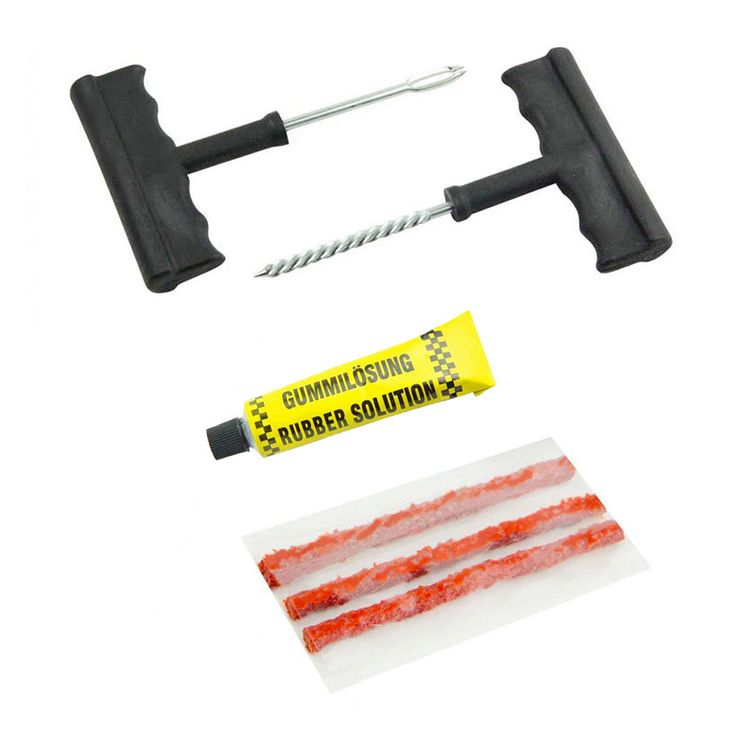 The insertion tool is the removed, leaving the plug in the hole, and thereby filling it. Often times, this plug-only repair is a “string plug,” which consists of a 4 to 5 inch long woven cord that is covered with a tacky substance. String plugs are typically supplied as part of a repair kit consisting of a reaming tool, an insertion tool and a few string plugs. Some kits also contain rubber cement to help create a seal between the string plug and tire. The cost of a string plug repair kit ranges from $4.00 to $5.00. It is also possible to purchase additional string plugs at a cost of $2.00 to $3.00 for a package of three to five replacement plugs. A string plug repair facility cost half of other types of repairs, making it an attractive alternative for consumers looking to save money.
The insertion tool is the removed, leaving the plug in the hole, and thereby filling it. Often times, this plug-only repair is a “string plug,” which consists of a 4 to 5 inch long woven cord that is covered with a tacky substance. String plugs are typically supplied as part of a repair kit consisting of a reaming tool, an insertion tool and a few string plugs. Some kits also contain rubber cement to help create a seal between the string plug and tire. The cost of a string plug repair kit ranges from $4.00 to $5.00. It is also possible to purchase additional string plugs at a cost of $2.00 to $3.00 for a package of three to five replacement plugs. A string plug repair facility cost half of other types of repairs, making it an attractive alternative for consumers looking to save money.
Tires that have been punctured and repaired with a string plug may hold air for months, years even for the remaining life of the tire. For this reason, many consumers consider a string plug repair a permanent solution.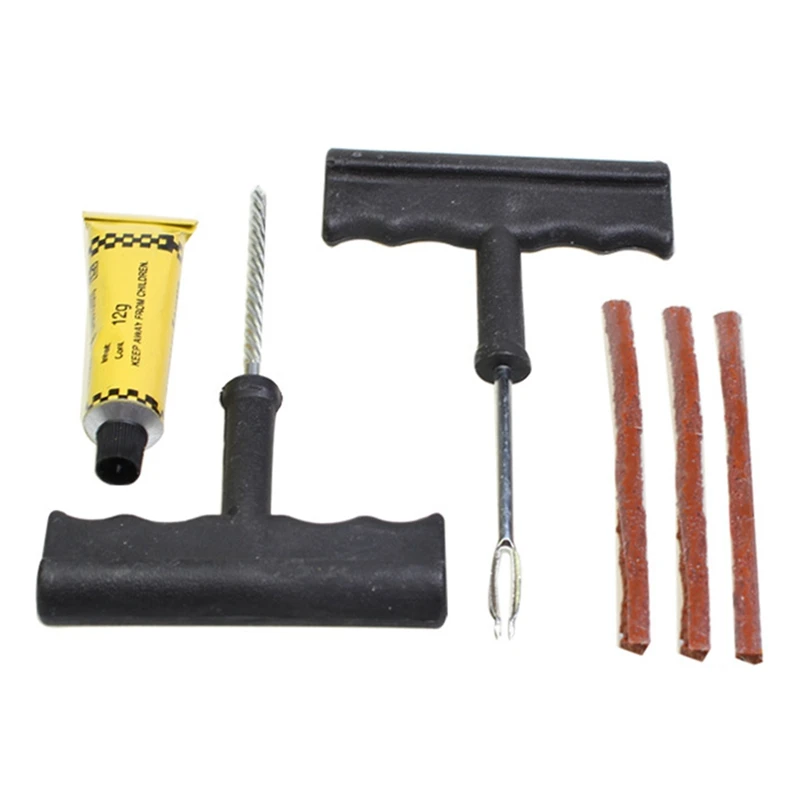 The tire manufacturing industry expressly disagrees. Various industry publications state that the greatest potential danger caused by a string plug repair is that this type of repair allows air and moisture to penetrate the body of the tire. The tire industry maintains that these elements seep in between the layers of the tire allowing the steel belts to degrade and causing the tire to deteriorate and corrode from within. Over time, this corrosion weakens the steel belts and the bonds between the rubber-to-rubber layers and rubber-to-the-wire layers of the tire, greatly increasing the risk of a tread separation. An additional risk of performing a string plug repair is that a puncture, even if it is within the “repairable” area of the tire, may cause damage to the inside of the tires. Without inspecting the inside of the tire, it is impossible to determine whether any damage has occurred, requiring it to be scrapped.
The tire manufacturing industry expressly disagrees. Various industry publications state that the greatest potential danger caused by a string plug repair is that this type of repair allows air and moisture to penetrate the body of the tire. The tire industry maintains that these elements seep in between the layers of the tire allowing the steel belts to degrade and causing the tire to deteriorate and corrode from within. Over time, this corrosion weakens the steel belts and the bonds between the rubber-to-rubber layers and rubber-to-the-wire layers of the tire, greatly increasing the risk of a tread separation. An additional risk of performing a string plug repair is that a puncture, even if it is within the “repairable” area of the tire, may cause damage to the inside of the tires. Without inspecting the inside of the tire, it is impossible to determine whether any damage has occurred, requiring it to be scrapped.
The second common tire repair method is a “patch-only” repair. In order t patch a tire, the technician must remove it from the rim to locate the puncture from the inside of the tire. After the puncture has been located, the area surrounding the puncture on the inside of the tire is prepared with scrapers, buffing tools and cleaning solutions in order to prepare the area to “bond” with the repair unit or patch. After preparation, vulcanizing cement is then applied to the patch and inner liner of the tire and the patch is applied over the puncture hole. The patch and surrounding area is stitched or rolled, and may be covered with sealant before the tire is put back on the rim. The tire industry also considers this repair method to be improper because it may allow air and moisture to seep into the tire through the injury channel from the tread surface.
After the puncture has been located, the area surrounding the puncture on the inside of the tire is prepared with scrapers, buffing tools and cleaning solutions in order to prepare the area to “bond” with the repair unit or patch. After preparation, vulcanizing cement is then applied to the patch and inner liner of the tire and the patch is applied over the puncture hole. The patch and surrounding area is stitched or rolled, and may be covered with sealant before the tire is put back on the rim. The tire industry also considers this repair method to be improper because it may allow air and moisture to seep into the tire through the injury channel from the tread surface.
It is NHTSA’s position that a combination repair is the only way to properly repair a tire puncture. A combination repair consists of a repair patch with a rubber plug/stem attached to its center. There are some rare circumstances when a separate patch and plug can be used, but normally the industry guidelines recommend a combination repair unit that is only one piece. After a puncture is located, it is reamed out to create a clean hole for the plug. The area around the puncture on the inside of the tire is then prepared to bond with the patch. Vulcanizing cement is applied to that area and to the patch/plug combination. The plug is pulled from the outside of the tire through the reamed hole so that it completely fills the hole and created a tight seal with the rubber of the tire. The patch bonds to the inside of the tire, preventing air from escaping with the plug seals the puncture hole preventing air form escaping while the plug seals the puncture hole preventing air and moisture from invading the tire. The rubber stem is trimmed to be even with the surrounding tread.
After a puncture is located, it is reamed out to create a clean hole for the plug. The area around the puncture on the inside of the tire is then prepared to bond with the patch. Vulcanizing cement is applied to that area and to the patch/plug combination. The plug is pulled from the outside of the tire through the reamed hole so that it completely fills the hole and created a tight seal with the rubber of the tire. The patch bonds to the inside of the tire, preventing air from escaping with the plug seals the puncture hole preventing air form escaping while the plug seals the puncture hole preventing air and moisture from invading the tire. The rubber stem is trimmed to be even with the surrounding tread.
Tire Repair Litigation
The above tire repair methods have been in use for decades and litigation involving the failure of repaired tires is not new, nor is it particularly widespread. In fact, tire manufacturers will use “improper repair” as one of their primary defenses in litigation. Most recently, in October of 2011, a state court jury in Tampa, Florida awarded $13.64 million to Gwen and Roy Chattelle after they suffered a tire failure and crash at highway speed that rendered her a quadriplegic. The case went to trial against the service center and its employee, who inspected and improperly repaired a tire before the crash.
Most recently, in October of 2011, a state court jury in Tampa, Florida awarded $13.64 million to Gwen and Roy Chattelle after they suffered a tire failure and crash at highway speed that rendered her a quadriplegic. The case went to trial against the service center and its employee, who inspected and improperly repaired a tire before the crash.
Three months prior to the crash, the Catelli’s right rear tire was low on air and was inspected and repaired by Tampa Auto Repair. There was no evidence introduced showing that the right rear tire had been moved, replaced or repaired again between the time of the repair and the time of the crash. At the time of the crash, the tire experienced a partial tread separation, suffered a catastrophic loss of air pressure and as a result, the vehicle went out of control rolled over several times. Inspection of the failed tire showed that it had two punctures. The first puncture had been repaired with an improper string plug and was already in the tire.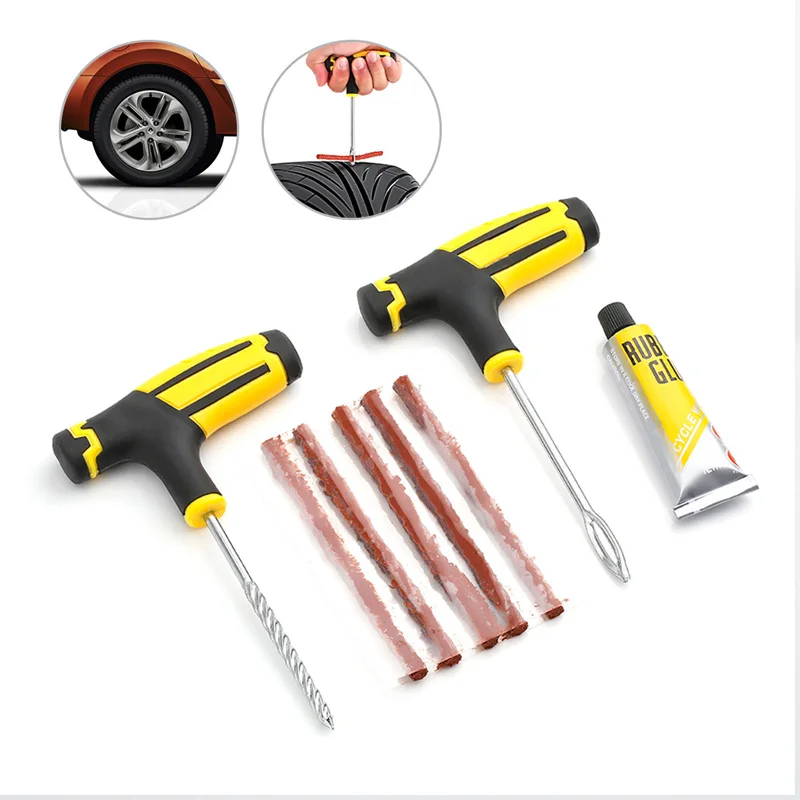 Plaintiffs contended that the second puncture was an additional improper repair by the defendants that never properly bonded and, as a result, the repair unit became dislodged. Plaintiffs’ experts opined that the Defendants violated industry standards and their own internal policies requiring a tire with an existing improper repair to be removed from service rather than repaired. Destructive testing showed rust on the second puncture and evidence verifying the corrosion of the belts from exposure to air and moisture. The jury returned a verdict for the plaintiffs, finding that the repair shop and its manager were liable for the Plaintiff’s damages. In march 2011, a jury in San Diego County, California awarded almost 14.5 million to the minor sons of Casey and Melanie barber who were killed in a 2006 Accident in which their van rolled over. At the time of the accident, the Barbers’ children were 3, 5 and 8 years old. The Barber case went to trial against a dealership that had repaired the tire using “patch-only” repair method described above.
Plaintiffs contended that the second puncture was an additional improper repair by the defendants that never properly bonded and, as a result, the repair unit became dislodged. Plaintiffs’ experts opined that the Defendants violated industry standards and their own internal policies requiring a tire with an existing improper repair to be removed from service rather than repaired. Destructive testing showed rust on the second puncture and evidence verifying the corrosion of the belts from exposure to air and moisture. The jury returned a verdict for the plaintiffs, finding that the repair shop and its manager were liable for the Plaintiff’s damages. In march 2011, a jury in San Diego County, California awarded almost 14.5 million to the minor sons of Casey and Melanie barber who were killed in a 2006 Accident in which their van rolled over. At the time of the accident, the Barbers’ children were 3, 5 and 8 years old. The Barber case went to trial against a dealership that had repaired the tire using “patch-only” repair method described above.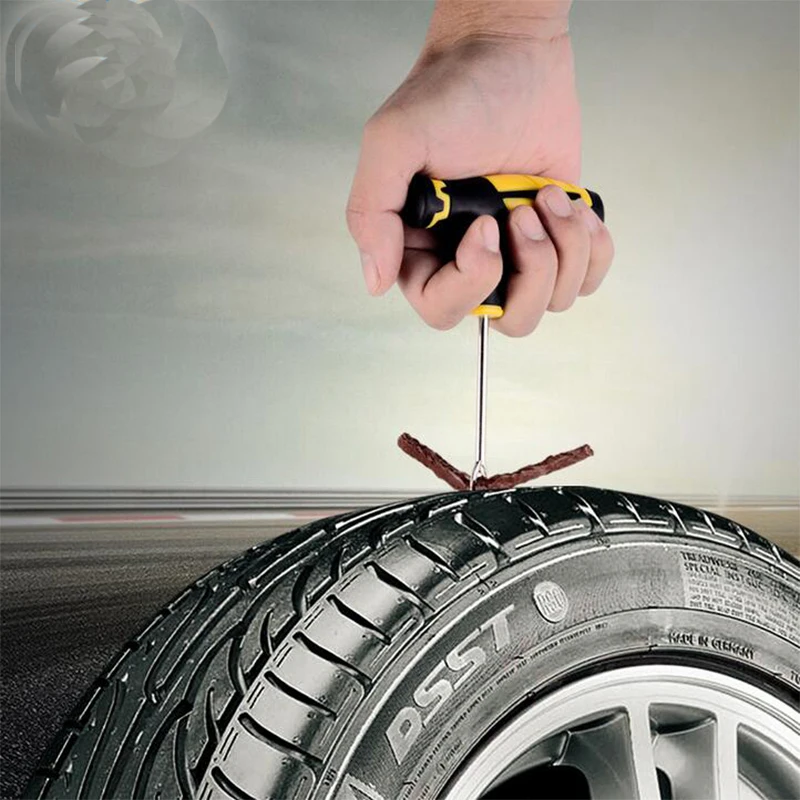 Additionally the puncture in the Barber’s tire was outside the reparable are recognized by the tire industry and evidence was presented at trial that the mechanic failed to prepare the area around the puncture to bond with the patch. Evidence was introduced that the tire mechanic who performed the repair had been on the job for less than a week and the shop had provided him with no how to properly repair a tire.
Additionally the puncture in the Barber’s tire was outside the reparable are recognized by the tire industry and evidence was presented at trial that the mechanic failed to prepare the area around the puncture to bond with the patch. Evidence was introduced that the tire mechanic who performed the repair had been on the job for less than a week and the shop had provided him with no how to properly repair a tire.
This highlights the fact that consumers are unacquainted with proper tire repair methods and assume they can rely on “professional” tire repair facilities to employ mechanics with the training necessary to complete repairs properly. These recent cases emphasize the need for minimum training requirements for persons authorized to perform tire repairs. There is currently no Automotive Service Excellence certification for tire repair.
In 2006, a minor child in Florida was injured when the vehicle he was riding in experienced a tire blow out and crashed. The tire had been repaired at a service station with a string plug, but no patch.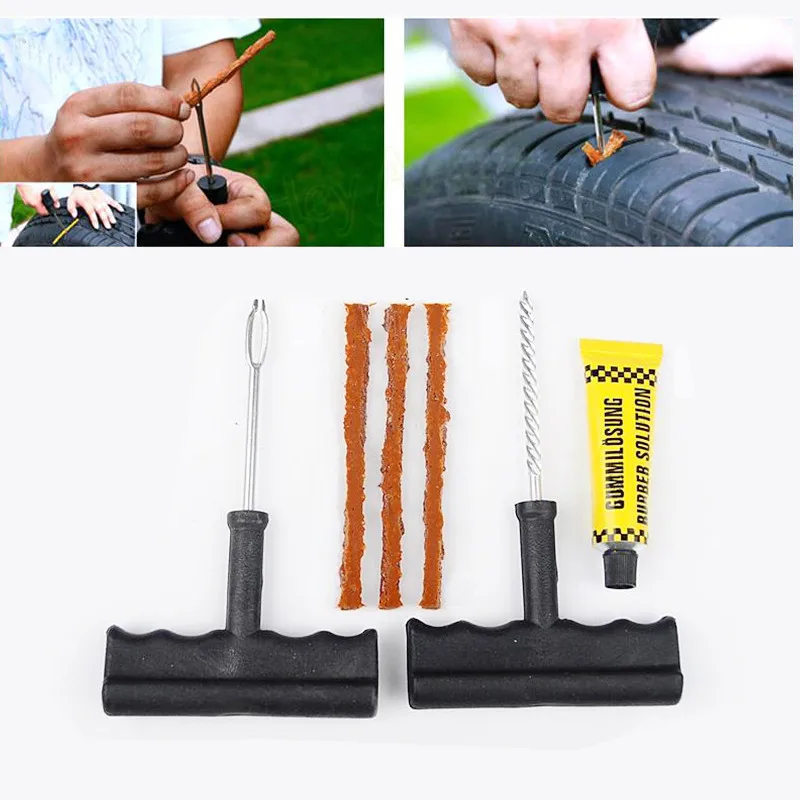 The Plaintiff sued the manufacturers of the string plugs, claiming that plug only repairs are unsafe and unreliable and can lead to tire failure. The trial court granted summary judgment to the plug manufactures, ruling the plugs were not defective in and of themselves because both sides’ experts testified that they could be used safely in combination with a patch. The court of appeals reversed holding that even if a string plug was not defective in all situations, such as when used in combination with a tire patch, the jury could have found that the string plugs failed to perform as safely as a reasonable consumer would expect under Florida’s “consumer expectation” standard in product defect cases.
The Plaintiff sued the manufacturers of the string plugs, claiming that plug only repairs are unsafe and unreliable and can lead to tire failure. The trial court granted summary judgment to the plug manufactures, ruling the plugs were not defective in and of themselves because both sides’ experts testified that they could be used safely in combination with a patch. The court of appeals reversed holding that even if a string plug was not defective in all situations, such as when used in combination with a tire patch, the jury could have found that the string plugs failed to perform as safely as a reasonable consumer would expect under Florida’s “consumer expectation” standard in product defect cases.
In 1996, in Peterson V. Ress Enterprises, a Chicago jury awarded $12.65 million to the Plaintiff. Peterson was a college student who was rendered quadriplegic in an accident resulting from a tire failure. The Plaintiff contended that the accident tire was improperly repaired by the defendants using a plug-only repair five months before the crash. On appeal, the appellate court affirmed the judgment in favor of the Plaintiff. The appellate court’s summation of the expert testimony in instructive about how string plug repairs can lead to tire failure:
On appeal, the appellate court affirmed the judgment in favor of the Plaintiff. The appellate court’s summation of the expert testimony in instructive about how string plug repairs can lead to tire failure:
Plaintiff’s expert testified that the tire failed upon road hazard impact because it was improperly repaired for a puncture with a string plug, causing air to seep into the tire’s casing. Goodyear’s expert testified that he failed tire was weakened prior to the accident by air seepage and migration resulting from Ress’ string repair.
Goodyear’s other tire expert testified that tire failures result from string plug repairs and that a string plug without a patch does not effectively seal a tire’s inner liner and air can seep into a tire’s carcass. Goodyear’s expert further testified that tread separation affects belt strength and renders a tire less capable of traversing road hazards.
Despite widespread knowledge among such industry experts that string plug repairs are unsafe; this knowledge does not appear to be shared by the public.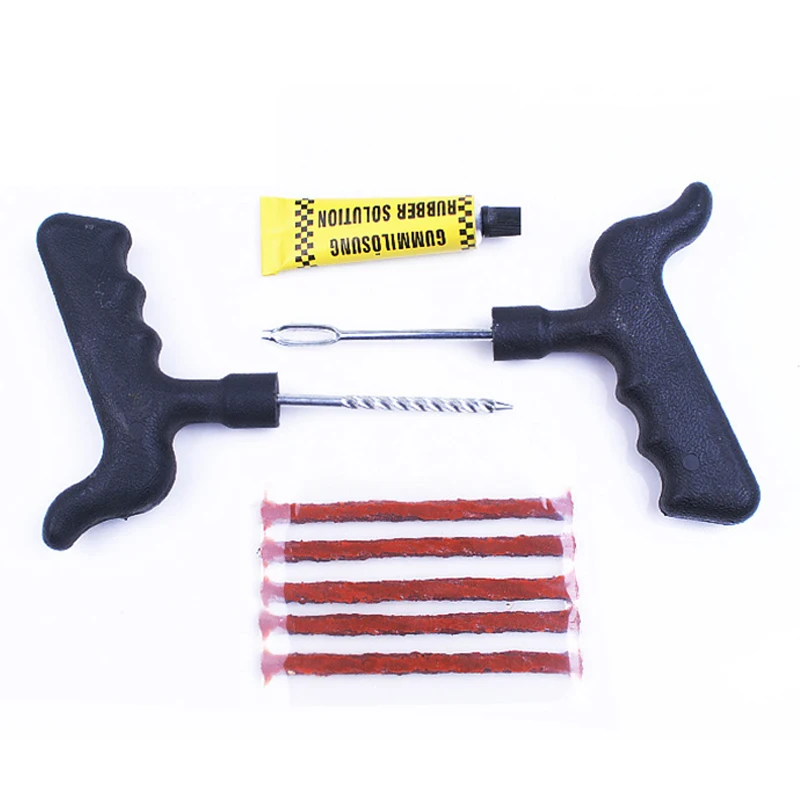 One challenge for plaintiffs in prosecuting a tire repair case is that many jurors have preconceived opinion that patch-only and plug-only repairs are safe and effective. Due to the lack of knowledge, many consumers believe these repairs are proper. These misconceptions are buttressed by the fact that improper can last years without failure. As a result, any juror seated in a tire repair case will likely have either personal experience with plug-only or patch-only repairs that perform without incident. Potential jurors will also hear a long string of anecdotes from other potential jurors who used these improper repairs without incident.
One challenge for plaintiffs in prosecuting a tire repair case is that many jurors have preconceived opinion that patch-only and plug-only repairs are safe and effective. Due to the lack of knowledge, many consumers believe these repairs are proper. These misconceptions are buttressed by the fact that improper can last years without failure. As a result, any juror seated in a tire repair case will likely have either personal experience with plug-only or patch-only repairs that perform without incident. Potential jurors will also hear a long string of anecdotes from other potential jurors who used these improper repairs without incident.
A second challenge, which was highlighted by the Peterson case, is that most failed tires have been in service for some period of time and show signs of some form of abuse or misuse, such as road hazards, under-inflation or overloading. These conditions, which may or may not have contributed to the tire’s failure, create challenges in proving causation. They certainly result in ready-made defense for defendant tire manufactures. Oftentimes, multiple causes will come together, such as in Peterson, where the collective trial experts opined that the immediate precipitation event was an impact with an unknown road hazard. However, the collective Peterson experts reasoned that the tire was unable to withstand a road-hazard impact because it was already weakened by internal deterioration from the string plug.
They certainly result in ready-made defense for defendant tire manufactures. Oftentimes, multiple causes will come together, such as in Peterson, where the collective trial experts opined that the immediate precipitation event was an impact with an unknown road hazard. However, the collective Peterson experts reasoned that the tire was unable to withstand a road-hazard impact because it was already weakened by internal deterioration from the string plug.
Why the use of Improper Repairs Persists Despite Clear Warnings
Despite the difference of a few dollars in cost between an unsafe, improper repair and a safe combination repair, widespread use of these improper repairs persists. Several factors contribute to this continued popularity of improper repair techniques. First, because plug-only repairs are performed from the outside of the tire and do not require demounting the tire from the rim, a plug-only repair can performed by almost anyone, anytime and with nothing more than an inexpensive repair kit.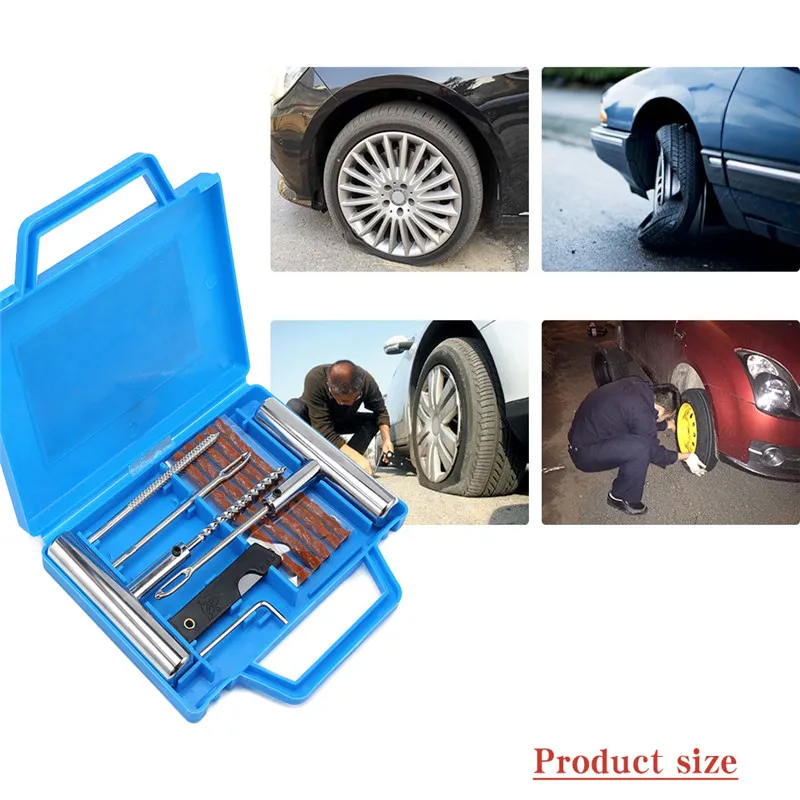 It is a relatively simple process that does not require the multiple steps necessary for a proper repair, like demounting, sanding or buffing, nor are adhesives required, making these repairs faster and less expensive. For most people it means the difference between being able to “do it yourself” at your own convenience, and having to leave your vehicle at a repair shop to be fixed on someone else’s schedule.
It is a relatively simple process that does not require the multiple steps necessary for a proper repair, like demounting, sanding or buffing, nor are adhesives required, making these repairs faster and less expensive. For most people it means the difference between being able to “do it yourself” at your own convenience, and having to leave your vehicle at a repair shop to be fixed on someone else’s schedule.
Secondly, problems caused by plug-only repairs may not happen immediately and, therefore, even if the tire does eventually fail, people may not associate that failure with the repair that occurred months or years earlier.
Additionally, many tire mechanics are never trained with proper techniques and many have used string plugs for years, resulting in a comfort level with the product. Many tire repair shop policies actually encourage the use of this method. Past testimony indicates that some shops are unaware or unconcerned with the safety issues caused by plug-only repairs.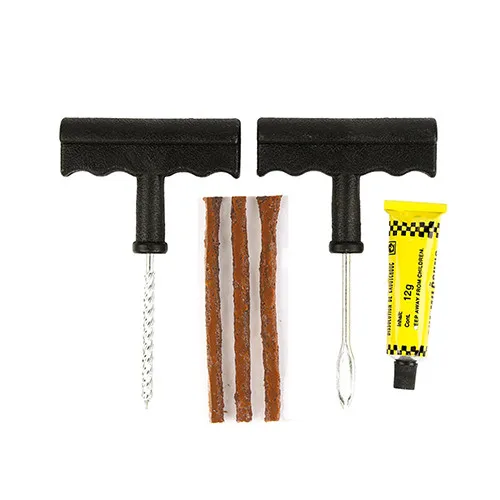 Other shops yield to the wishes of consumers who may insist the mechanic perform a plug-only repair that may save money. Still other cases show that some repair facilities actually train their mechanics to use plug-only repairs and supply the shop with the tools to do so. However, even shops those “officially discourage or prohibit the use of string plugs often employ a pricing and wage structure that creates a strong incentive for its workers to use them anyway.
Other shops yield to the wishes of consumers who may insist the mechanic perform a plug-only repair that may save money. Still other cases show that some repair facilities actually train their mechanics to use plug-only repairs and supply the shop with the tools to do so. However, even shops those “officially discourage or prohibit the use of string plugs often employ a pricing and wage structure that creates a strong incentive for its workers to use them anyway.
After reporting the out come of Barber case discussed above, one automotive repair websites received scores of comments critical of the litigious Americans” who had field lawsuits related to plug-only repairs. One commentator, apparently a mechanic at a facility that repairs tires said “We were told to patch, but I buy my own plugs … a patch pays 0.3 a plug pays 0.3” In other words, most repair facilities compensate mechanics by the type of job, assigning a specific amount of time to complete it. If a tire, it will usually take longer that the time allotted to perform a combination repair.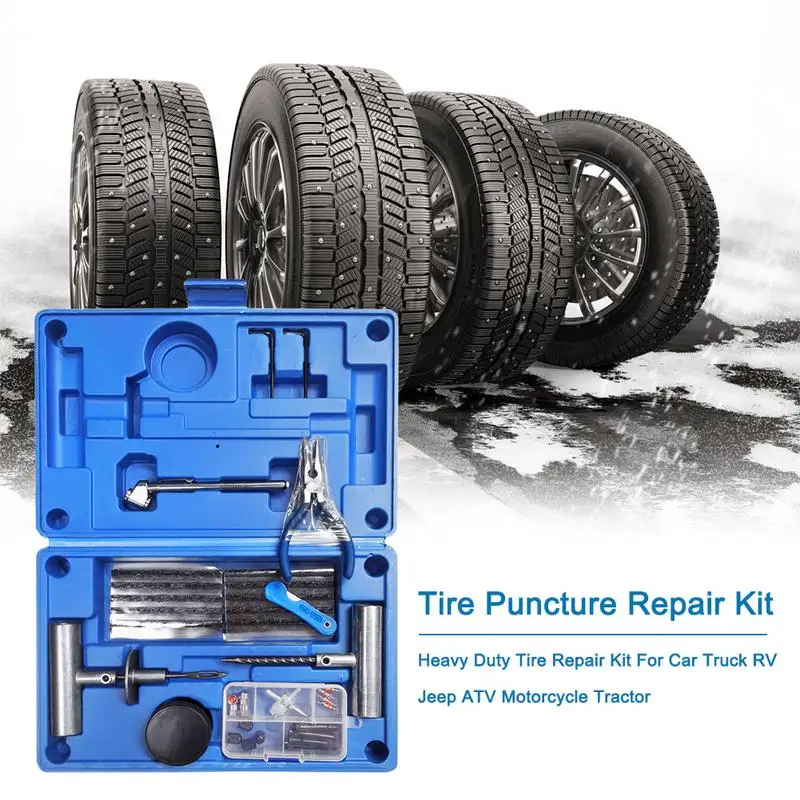 These results in a incentive for the mechanic to use the quicker, less effective repair method to save time, make more money and move on to the next job.
These results in a incentive for the mechanic to use the quicker, less effective repair method to save time, make more money and move on to the next job.
Finally, consumers are unacquainted with the long term dangers of driving on tires with improper repairs. There are strong public sentiment that our government is overly active in recalling and banning unsafe products, so it is reasonable for consumers to assume that if string plug repair kits are being offered for sale legally at reputable retailers and tire repair shops, they must be safe. A cursory review of multiple automotive websites reveals the widely revels the widely held belief that if a string plug holds air, it is safe to use. Some consumers buy “emergency tire repairs kits” just to get them through a roadside emergency, but then forget to replace the tire. Consumers may also assume that if the tire is holding air, the string plug is “working” without realize that it is causing the tire to slowly deteriorate from the inside.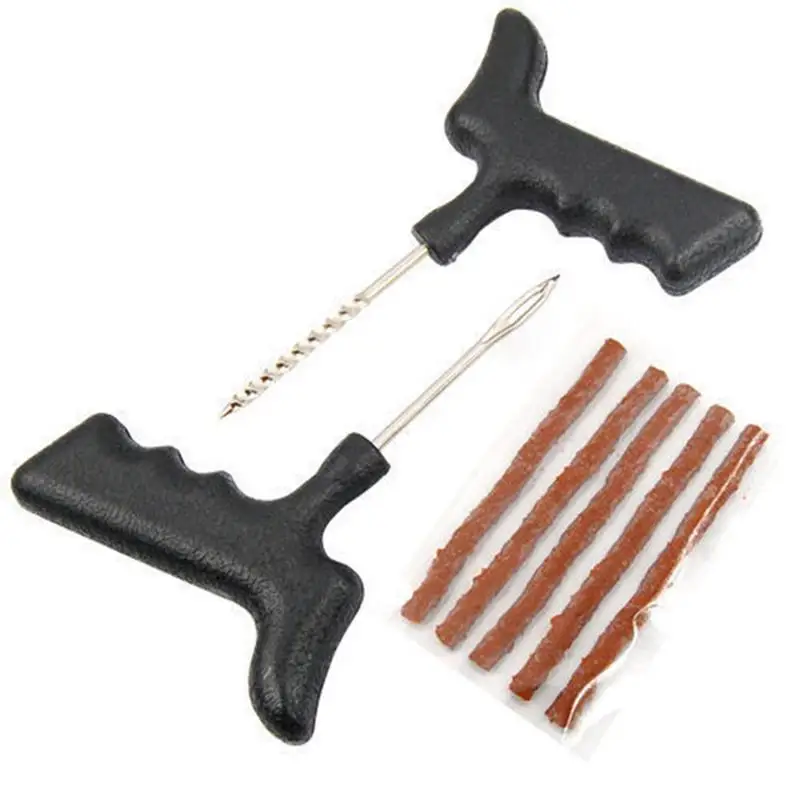
Perhaps no responsible driver will set off on a journey without a "reserve" - you never know what surprises prepared by Mrs. Fortuna and our notorious roads. However, the spare tire takes up a significant amount of space in the trunk, and you don’t want to bother with a replacement because of any trifle. That is why more and more modern motorists, in addition to a first aid kit, a fire extinguisher and tools, are purchasing special first aid kits for a punctured tire - repair kits and tire sealants. We will look at how these miracle remedies work, how to use them and what to look for when choosing, in this article.
Tire repair kit and sealant - an alternative to a spare tire or an addition?
To begin with, both the repair kit and the sealant are devices for restoring the integrity of the tire in an emergency. It is emergency - you can drive on tires “patched” in this way not far, on average, no more than 15 kilometers (exceptions are only the smallest punctures). It is important to understand: the main "mission" of all repair kits is to allow the motorist to easily reach their destination or service station, where professionals will take care of the affected wheel.
It is important to understand: the main "mission" of all repair kits is to allow the motorist to easily reach their destination or service station, where professionals will take care of the affected wheel.
However, the common purpose is, perhaps, the only thing that unites the repair kit and sealant. Since in everything else: composition, principle of action, method of application - these useful inventions differ greatly.
DIY Tire Repair Kit: DIY Patch
The Classic Tire Repair Kit is a set of tools and accessories for DIY manual repair of a punctured tire or tube. The “magic” case includes: a tool for expanding the puncture (awl), a tool for inserting a tourniquet, a set of tourniquets made of rubber or nylon fibers, a knife. The mechanism of operation is very simple: first you prepare the puncture site, giving it the desired size and shape, and then literally plug the hole with a tourniquet. Rubber bands are stronger and more durable, however, during installation, they must first be lubricated with glue (as a rule, in such cases, the type of glue is indicated in the instructions for the repair kit).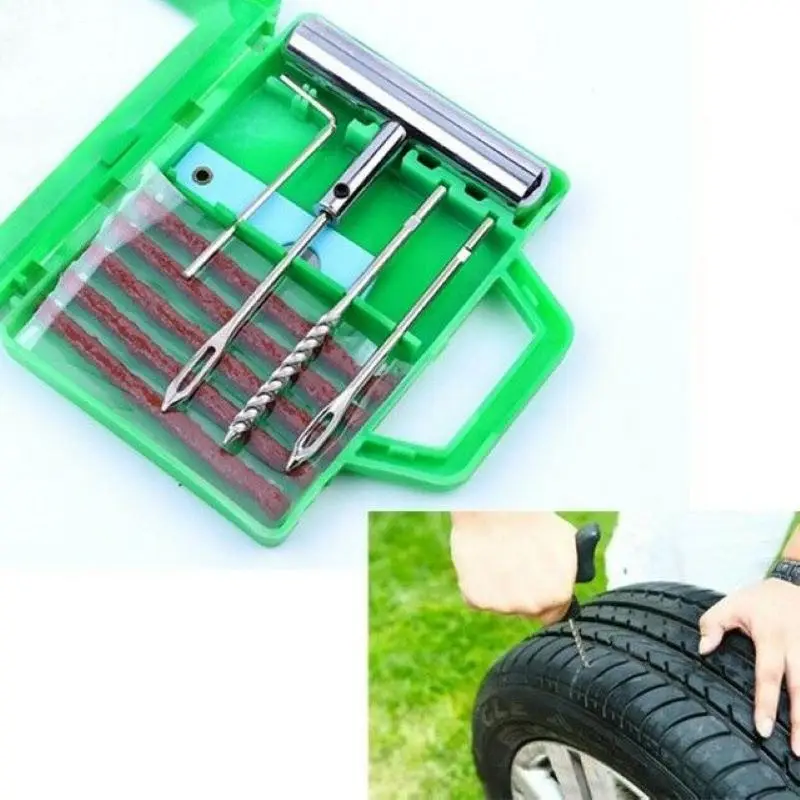 After the "patch" is delivered, you will need to restore the pressure in the tire - and that's it, you can go!
After the "patch" is delivered, you will need to restore the pressure in the tire - and that's it, you can go!
IXORA recommends: Tubeless Repair Kit in AIRLINE Case – This handy, stylish kit includes everything you need to repair any tubeless car tire. The kit includes: tools with “file” and “needle” tips, a replacement needle tip, 20 raw rubber bundles, a knife, a hexagon and the plastic case itself, which allows you to compactly remove and transport all the contents.
Tire Sealant: Spare can
A completely different story with sealants. They are special solutions that envelop the hole from the inside and form a dense film at the puncture site or simply "clog" the hole. The difference in composition: some sealants are based on latex, which instantly hardens upon contact with air, while others have synthetic or natural fibers in the structure, which fill the hole.
According to the scope of application, sealants are preventive and repair. As the name implies, the former are used in intact wheels to prevent possible punctures (for example, if the car runs over a nail, the sealant pumped into the tire will automatically close the puncture so that the driver will not notice the accident). As for repair sealants, they are designed specifically for the “treatment” of already damaged tires.
As the name implies, the former are used in intact wheels to prevent possible punctures (for example, if the car runs over a nail, the sealant pumped into the tire will automatically close the puncture so that the driver will not notice the accident). As for repair sealants, they are designed specifically for the “treatment” of already damaged tires.
How tire sealant works
The principle of operation and, accordingly, the algorithm for working with sealant is as follows:
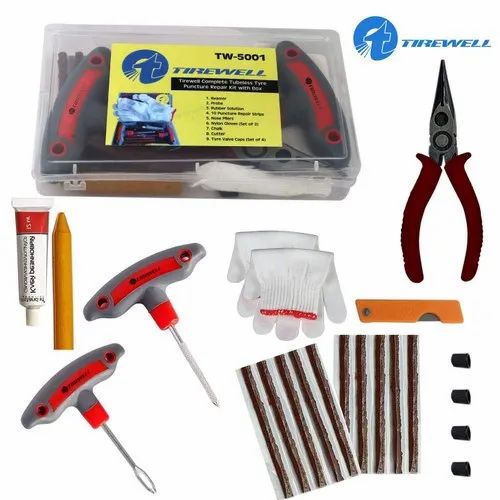
However, be aware that sealant is not a panacea, it is a serious drug that can have a strong effect on wheels. So, for example, if you violate the speed limit (after using a repair sealant, it is not recommended to drive faster than 50 km / h), you risk “earning” wheel imbalance due to the fact that the sealant can “gather” into clots. Therefore, before use, carefully read the instructions and follow all the instructions: wheels are safety, and jokes are bad with safety.
How to choose a tire sealant
When choosing a sealant, pay attention to the following criteria.
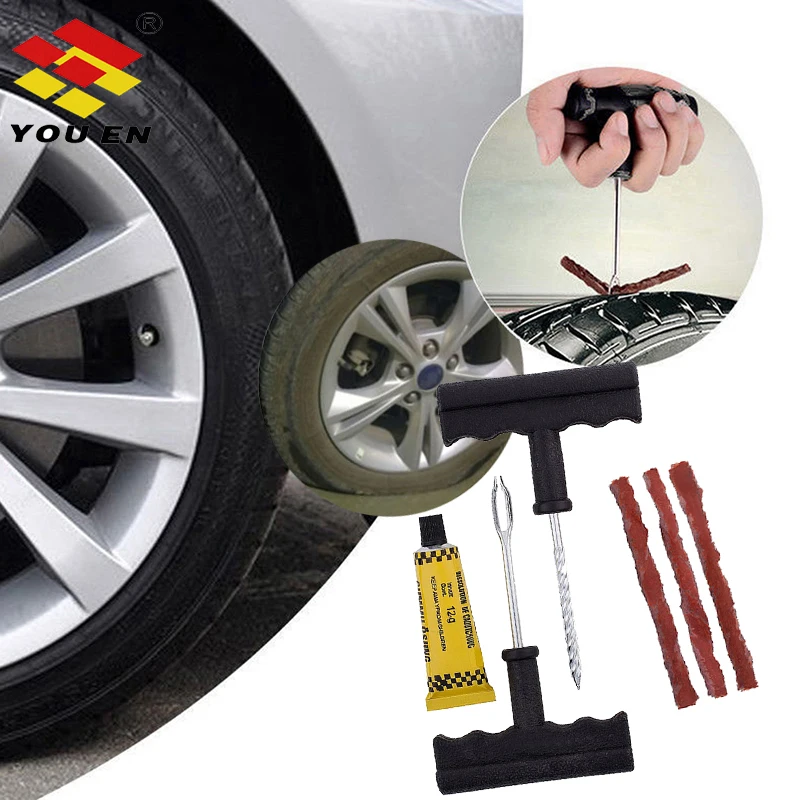 With them, you do not have to jack up and pump up the wheel manually - agree, it's convenient!
With them, you do not have to jack up and pump up the wheel manually - agree, it's convenient! IXORA recommends: GUNK and MOTUL Tire Repair Sealants - modern effective aerosols that allow you to restore the integrity of both tubeless tires and tubes in a matter of minutes. The compositions are universal, easily cope with holes up to 5 mm, are absolutely safe and do not disturb the balance of the wheels.
Why a sealant and repair kit should be in every car
Without a doubt, a repair kit and sealant are indispensable tools, especially if you have a long road ahead of you. Changing a wheel on the side of the road in the wilderness and driving around dusty country roads in search of at least some kind of tire service? Or bring along an emergency kit and a can of liquid "reserve"? I think the choice is obvious.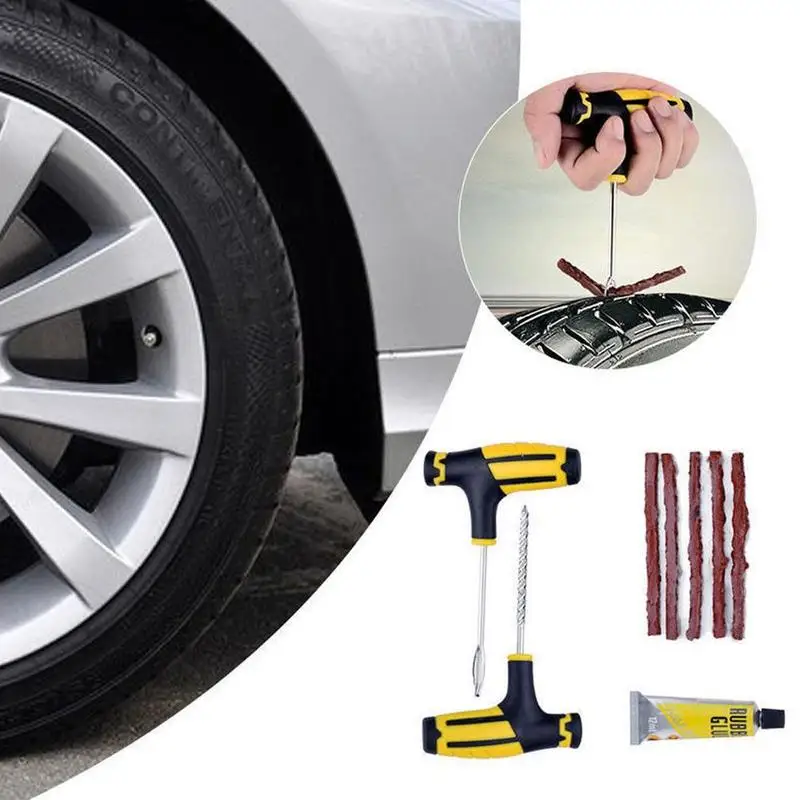
And finally: a general tip for working with repair kits and sealants - both of them are most effective for sealing small punctures (about 5 mm, some sealants up to 10 mm, but no more!). In addition, the sealant will be useless if the damage occurs not in the tread area, but, for example, on the side. Therefore, it is reasonable to have options in the trunk for both cases: a repair kit for manual repairs, and a sealant - especially since the price of the issue is more than affordable, and the benefits are obvious.
You can always buy a repair kit and sealant for tires, as well as pick up any other spare parts and accessories in the hypermarket network IXORA . Our staff will be happy to help you with your choice!
You can get professional advice when choosing a product by calling 8 800 555-43-85 (the call is free within Russia).
According to history, one day in 1888, English veterinarian and cyclist John Dunlop, tired of shaking through the countryside of Britain on molded rubber tires, glued a piece of water hose with a ring and pumped it up with a football pump - this is how the first pneumatic tire appeared.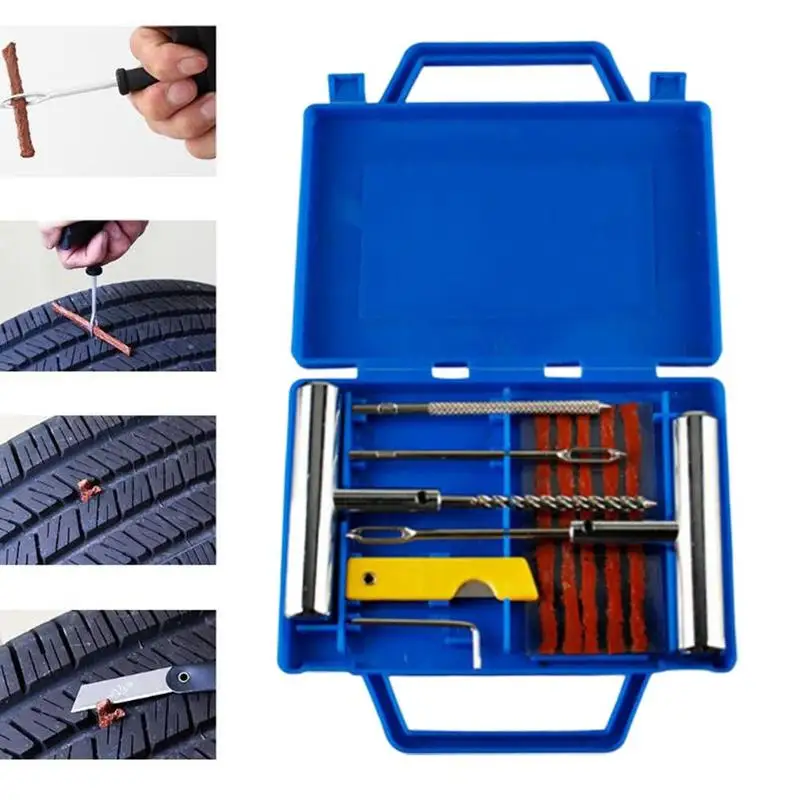
History is silent when it was pierced for the first time - but most likely it happened in the same year. So the need for tire repair appeared simultaneously with their appearance.
Puncture required cut with burrOver the past 124 years, tire repair technology has been brought to almost perfection. For several decades (after tubeless tires in the vast majority have given way to tubeless ones), the procedure for repair has practically not changed.
This procedure is outwardly quite simple - and car owners (as well as part of the workshop workers offering this service) have the false impression that it is not particularly important to follow the prescribed technology exactly - they say, "it will do." And many "specialists" do not really know the technology. And therefore they sincerely believe: why do we need all sorts of "extra" actions? Why take the tire off the rim when you can keep the wheel off the car at all? The client is in a hurry - so you can plug a puncture (and a cut) with a cord, as they say, “on the go”.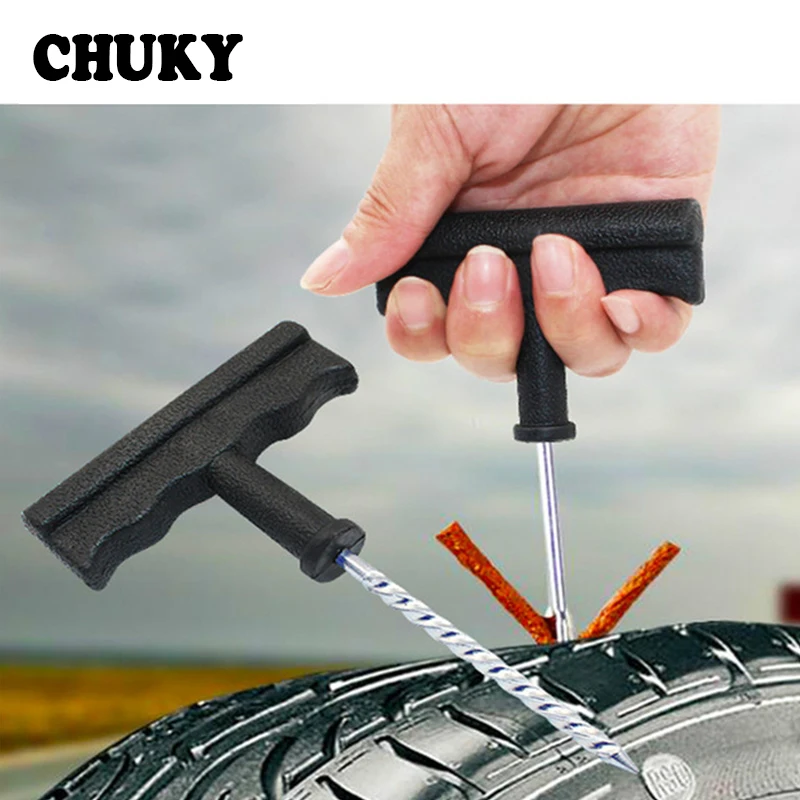 Does not poison the air, and everyone is happy. By the way, some workshops that promise “repair of punctures and cuts” do not have anything at all, except for cords and an awl for their installation.
Does not poison the air, and everyone is happy. By the way, some workshops that promise “repair of punctures and cuts” do not have anything at all, except for cords and an awl for their installation.
In fact, each stage of tire repair technology is, as they say, "written in blood" - like military regulations and safety instructions. And this is not an exaggeration: what threatens a sudden rupture of a wheel at speed is not worth saying - if people do not die, then they are very lucky ...
We asked our expert, one of the heads of the Russian representative office of the German company "REMA TIP-TOP GmbH" Alexander Akhapkin, to talk about tire repair technology and those common mistakes (or even outright hack work) that car owners have to face.
- Tire repair, in general, comes down to a simple and understandable action: you need to plug the resulting "hole" in it. It sounds simple - like the instructions for skydiving: stepped out of the plane and pulled the ring.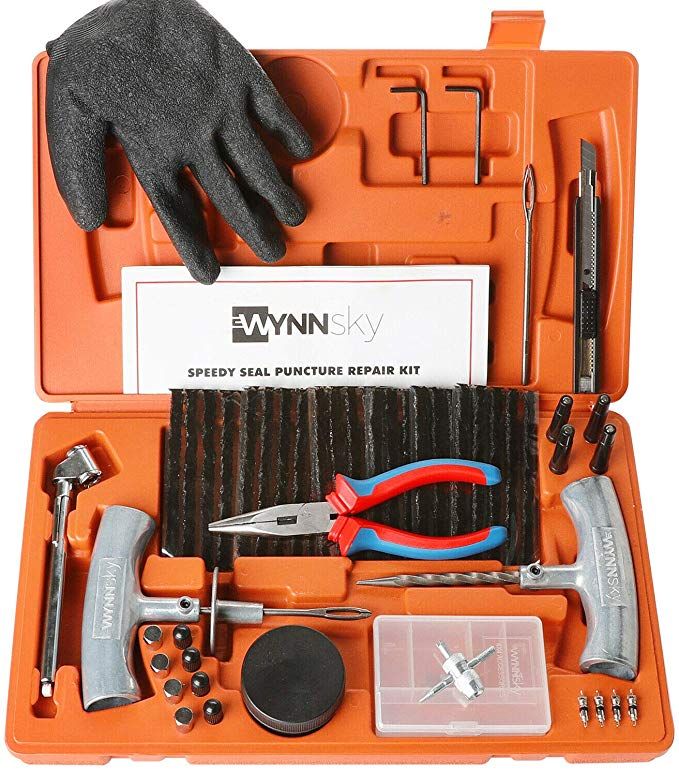 Only now, no one jumps with a homemade parachute, especially one packed according to rumors and advice from neighbors. Although the consequences of such a jump and improper tire repair are quite comparable.
Only now, no one jumps with a homemade parachute, especially one packed according to rumors and advice from neighbors. Although the consequences of such a jump and improper tire repair are quite comparable.
So let's go in order: how to do it!
So, the first step: determine the type of damage - is it a puncture or a cut?
The difference, of course, is in size. Roughly speaking, if no more than 1-2 cord threads are damaged, then this is a puncture. Anything more is a cut.
If it is a cut, it is important to determine its size. Tires have speed categories - and the higher it is, the smaller the amount of damage that can be repaired. For example, it is allowed to repair the tread of a category Q tire (not higher than 160 km / h), if the damage is not more than 20 mm. If the tire category is S (up to 180 km / h), then the size of the permissible damage is not more than 12 mm. And on a category H tire (up to 210 km / h), only a puncture with a diameter of not more than 3 mm can be repaired.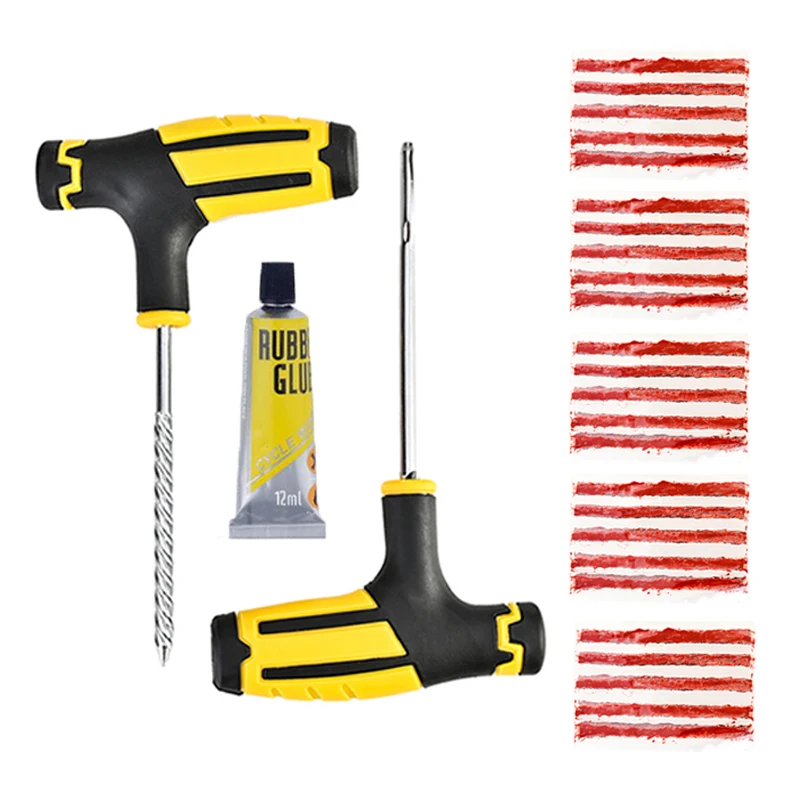
In general, damage limits depending on their location, size and speed category of the tire are given in special tables RemaTipTop, compiled according to the results of tests and tests.
When repairing with a cord, it is necessary use adhesiveFor example, regarding damage to the shoulder of a category Q tire (up to 160 km/h), repairs are allowed if the “injury” does not exceed a diameter of 8 mm. And damage to the sidewall can be repaired if it is no more than 35 mm long (along the side height) and up to 20 mm wide.
Second step: what kind of repair is needed? To get there - or capital? The fact is that the most common repair of a puncture with a cord is actually exclusively temporary - just to get to the station and overhaul the tire. And often the car owner asks to fix an expensive tire with a cord, which he puts on an expensive car - and stops there. And at the stations they “go forward” to him: they say, the consequences are at the expense of the customer .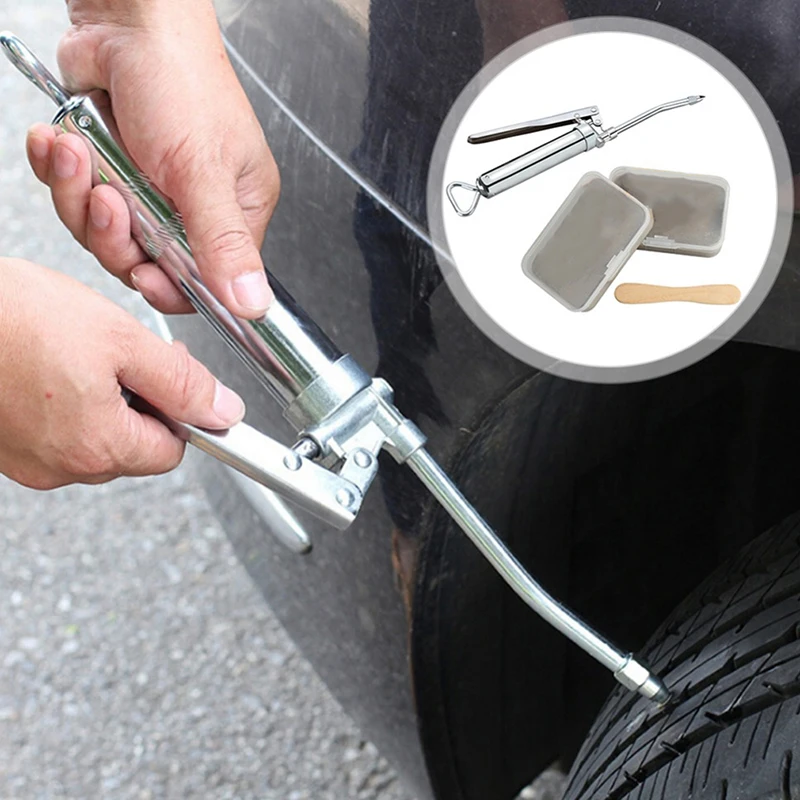 ..
..
But even with such a repair, some "masters" manage to cheat. The cord, before placing it in the puncture, is not even smeared with glue. There is a category of cords made of "raw" rubber (they are also called "snotty"). And it is mistakenly believed that glue is not needed for them. No - it's a must!
In addition, when repairing with a cord, it is necessary to form a hole with a burr to enter the repair material. And this is very often not done (on the principle - and so it will do!). For ten kilometers, maybe it will “get off” ...
Step three: puncture overhaul, after which the tire will reach its physical wear.
Fungi are installed at "vertical" punctures Here the choice of repair tactics depends on the location and area of damage. If the puncture axis runs perpendicular to the tread surface, then it is preferable to seal it with a fungus. If the puncture axis runs at an angle of more than 12 degrees from the surface, then a plug must be used.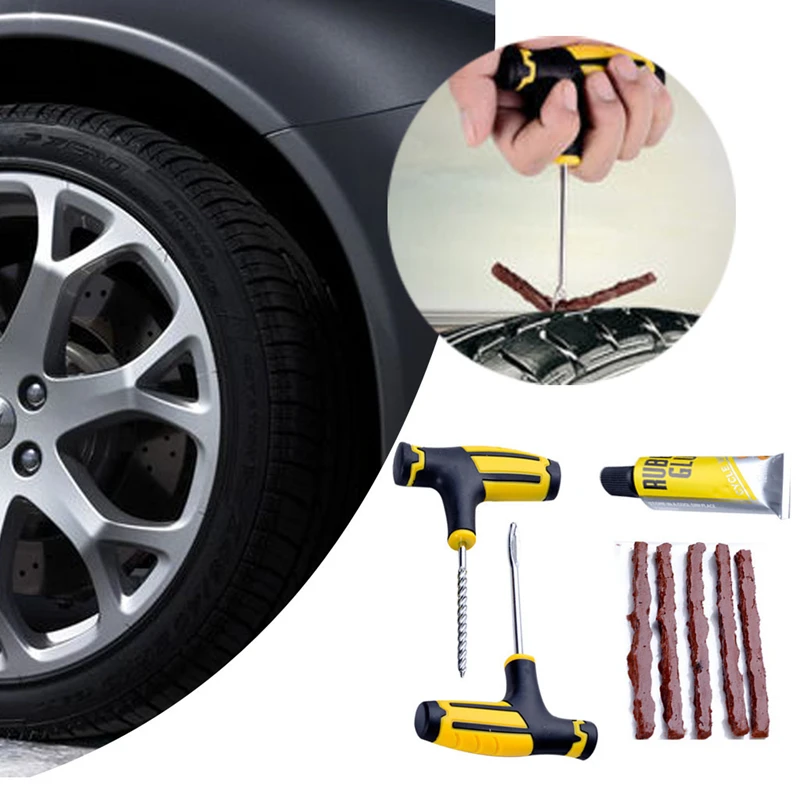
Tire repair fungus is preferred, but if the puncture is at an angle, the fungus head will not be able to fit snugly against the inside of the tire. And over time it can come off - which, of course, is unacceptable.
In principle, all actions of the wizard when using both fungus and cork are the same. The puncture is drilled with a burr with a diameter of 3 mm or 6 mm. The repair area from the inside of the tire is processed with a roughening tool - this is done so that the glue applied to the fungus cap or patch (if cork is used) firmly adheres to the surface of the tire.
But this is followed by an outwardly simple but obligatory operation - the dust formed after drilling and roughening is carefully removed with a brass or coconut brush, and then vacuumed. Moreover, simple “blowing” or brushing with a rag is unacceptable!
Processing with a special solution - required! Then the repair area is smeared with glue (the Germans call it "cement" - that's what it says on the containers with it. In fact, this is a high-tech adhesive system) and a fungus or cork is introduced into the hole - from the inside of the tire! Moreover, until the moment of installation, it is impossible to remove the packaging from the fungus or cork - it can be easily removed when they are introduced into the hole to be sealed. After installing the cork, its excess is cut off - and the repair area is smeared with glue. A patch is applied on top.
In fact, this is a high-tech adhesive system) and a fungus or cork is introduced into the hole - from the inside of the tire! Moreover, until the moment of installation, it is impossible to remove the packaging from the fungus or cork - it can be easily removed when they are introduced into the hole to be sealed. After installing the cork, its excess is cut off - and the repair area is smeared with glue. A patch is applied on top.
Next, the fungus cap or plaster is rolled on. And it remains only to cut off the excess fungal stem or cork from the outside of the tire.
It is very important to use materials from only one company for temporary repairs with a cord and a major fungus or plug! The fact is that the adhesives themselves are spilled: there are those produced on the basis of hydrocarbons, and there are those based on trichlorethylene. In addition, adhesives from different companies, even on the same basis, differ in composition. And therefore, in case of confusion, a reliable connection will not work - at best, it will last for some time.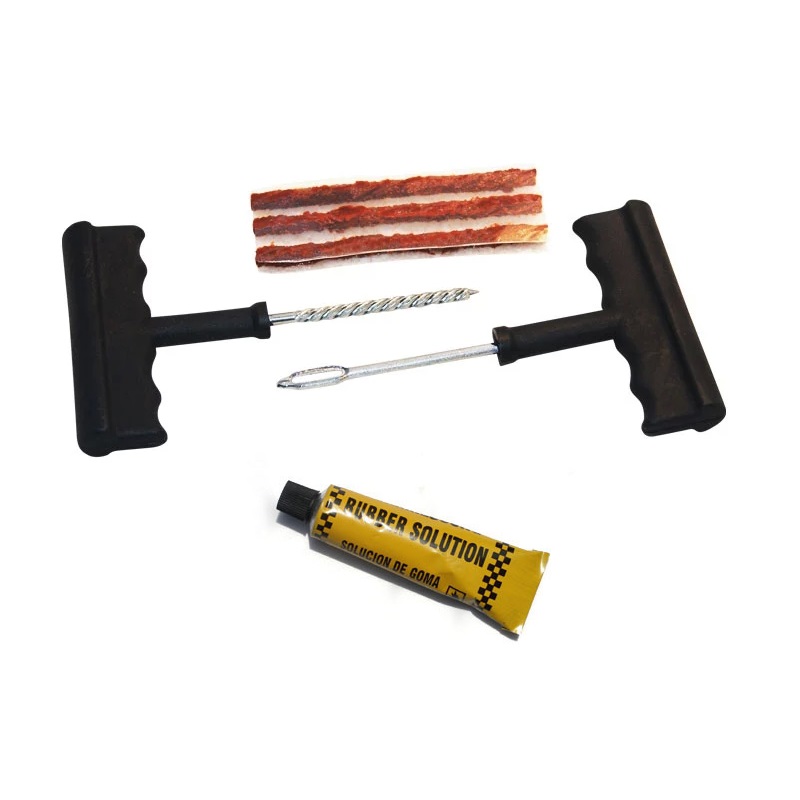 But - a little time ...
But - a little time ...
Fourth step: overhaul of large damage. Let me remind you that damage that exceeds a puncture, but does not exceed the maximum allowable, is considered large. With such damage, the tire is only scrapped - it is no longer possible to achieve the necessary reliability.
The technology of such a repair is simple - but there are no "extra" steps and steps in it. Outside, the place of damage is cut "under the funnel" - part of the damaged rubber is removed, the remains of the cord. From the inside, the place under the patch sticker must be roughened.
The plaster is a high-tech articleThen the dust must be carefully removed after processing with a vacuum cleaner - and this operation must not be skipped!
Next, the “funnel” is treated with a special solution: in the case of using the “Tip Top” technology, this is “MTRThermopress”.
And filled with raw rubber of the same brand as on the tire - heated strips or a special extruder.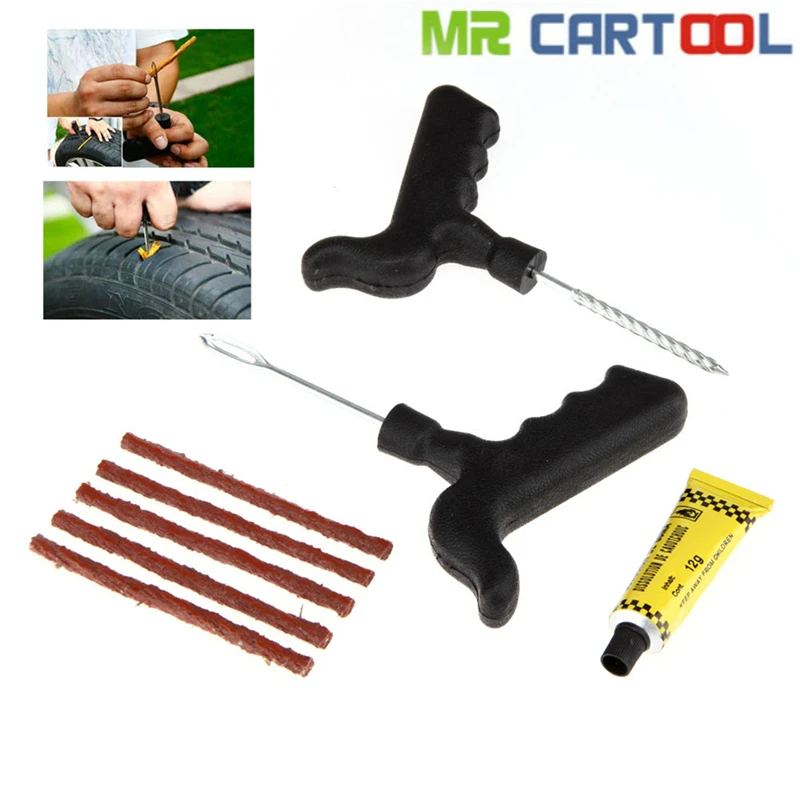 Raw rubber is treated with the same solution. And immediately closed with insulating foil for subsequent vulcanization.
Raw rubber is treated with the same solution. And immediately closed with insulating foil for subsequent vulcanization.
Please note - do not skip a double treatment with mortar, nor cover the vulcanization site with foil!
A plaster is applied from the inside of the tire to the damaged area. And be sure to roll with a special rolling - this stage also cannot be skipped.
Something about Band-Aids: Don't try to save money by replacing your branded Band-Aid with the first piece of rubber you find! In fact, a patch is a rather complex rubber product reinforced with synthetic or steel threads that coincide with the direction of the tire cord threads.
Patches are produced separately for bias and radial tires. For their correct orientation (it is very important!) Arrows are applied on each of them, which are directed to the sides. You cannot cut the patch "to size" - it cannot be cut at all due to the complex internal construction of the cords. Companies produce several sizes of patches - and you need to choose from them using the Type Top damage table.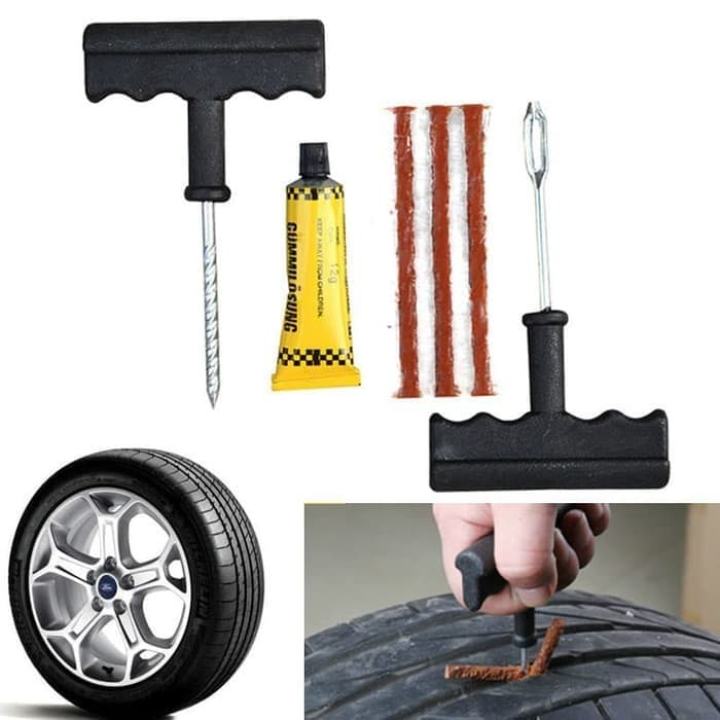
Naturally, the use of patches and adhesives with which they are glued, produced by different companies, is unacceptable - “cement” is applied to the surface of the patch, which needs to be smeared on the surface from the inside of the tire: only in this case the connection will be reliable and durable.
Step five: vulcanization. In order to vulcanize a “sandwich” of raw rubber, a tire and a plaster, it must be heated. But the problem is that vulcanizers, whose power allows you to warm up the entire volume of the repaired area, are expensive and consume a lot of electricity. In addition, they are bulky - the area of \u200b\u200bthe heating plate must exceed the size of any patch. So not every workshop can afford such a vulcanizer.
There is another solution - the so-called "two-stage" repair method. This is when a vulcanizer that is more affordable and consumes less electricity is only the site of damage.